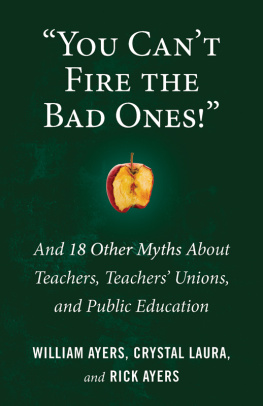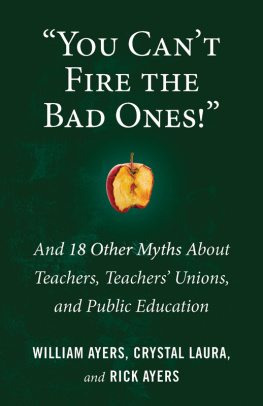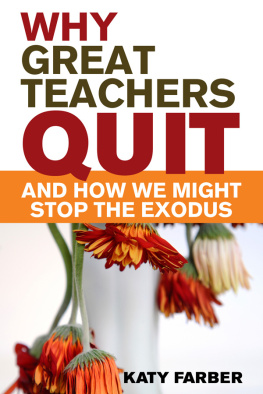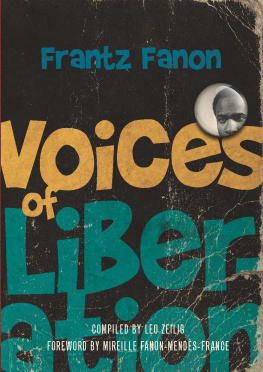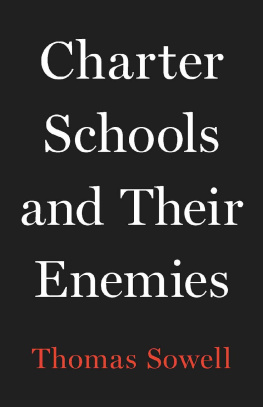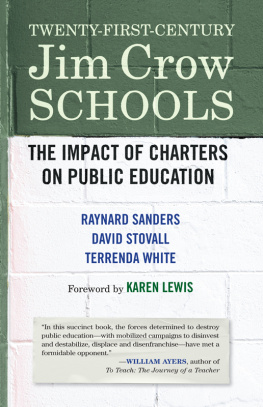
INTRODUCTION
R OTTEN A PPLES
In 2014, Time magazine ran a cover story entitled Rotten Apples, with the subheading Its nearly impossible to fire a bad teacher. Some tech millionaires may have found a way to change that.
Several years earlier, Time had run a long feature on Michelle Rhee, the public face of the newly energized corporate school reform forces and then chancellor of the Washington, DC, schools, with the headline How to Fix Americas Schools.
Newsweeks cover of March 15, 2010, consisted of an artists nostalgic rendering of a classroom clich: a blackboard with colored chalk and an eraser on the shelf beneath, the board covered with a single phrase in the style of a child required to atone for misbehavior by writing the broken rule over and over until it finally sinks in: We must fire bad teachers. The bright-yellow text in the center underlines the message: The Key to Saving American Education. No one could possibly miss the message, and yet the article itself would hardly warrant a passing grade as a college essay: its filled with assertions disconnected from evidence (Some educational experts have noticed an uptick in the academic quality of new teachers.), and it makes sweeping and unexamined claims (In recent years researchers have discovered something that may seem obvious, but for many years was overlooked or denied. What really makes a difference, what matters more than the class size or the textbook, the teaching method or the technology, or even the curriculum, is the quality of the teacher.).
On March 7, 2010, the New York Times Magazine ran a cover with the heading Building a Better Teacher, which portrayed a teacher-as-Wonder-Woman-in-motion, wearing black horn-rimmed glasses labeled Behavior-Monitoring Glasses while holding a piece of chalk (Smart ChalkNever Writes a Wrong Answer) in one hand and a cup of coffee spiked with a supplement (Instant Command of Authority) in the other. Several weeks later, May 23, 2010, the Times Magazine used a familiar imagethe front of a modern classroom with a whiteboard, markers, and erasers; a table with papers and a coffee cup; and an assignment posted on the board in red script: Are Teachers Unions the Enemy of Reform? Discuss.
On August 31, 2009, the New Yorker ran a lengthy story called The Rubber Room: The Battle over New York Citys Worst Teachers, which opens with a pithy quote from an anonymous principal claiming that the head of the teachers union was so single-minded and corrupt that she would protect a dead body in the classroom. The article focuses on a site in the central bureaucracy where teachers whove been removed from their teaching duties report while awaiting arbitration that will settle their teaching status permanently. Its a thick description of a kind of purgatory for fifteen teachers, and it invites a bit of lip-smacking fascination with an oddly compelling collection of outcasts. But it is, after all, fifteen teachers in a system of forty thousand. And it turns out that theres no battle at all, only a nod to due process, an exercise that is a little clumsy on all sides but completely common in employment and labor disputes in all areas. Buried deep within the quasi-ethnographic piece is this: before teachers got organized, they endured meager salaries, tyrannical principals, witch hunts for Communists, and gender discrimination against a mostly female work force. Still, its those fifteen bad teachers and their awful, self-interested union that wreak havoc on the schools and must be the core of reform efforts. The conservative commentator Bill OReilly gleefully broadened that focus on October 12, 2010, offering his opinion that unruly students, lazy and incompetent teachers, and apathetic administrators together destroy an adequate academic environment.
These are all examples of a common frame and a stuttering refrain: Rotten teachers and their reactionary unions are killing the schools and hurting our children. Listen to almost any politician at a microphone responding to the question How would you improve public education? Without missing a beat, and in a rising voice, the first answer seems programmed and rehearsed from a repeating loop in everyones stump speech: Id get the lazy, incompetent teachers out of the classroom. The assumptions are questionable, the evidence nonexistent, but the frame is airtight: who, after all, is advocating for the lazy or the incompetent?
Of course, if we were to get to the microphone first, wed change the frame and flip the script: all public school students deserve a well-resourced and fully functioning school right in their own community or neighborhood, and that school must be staffed by thoughtful, intellectually grounded, morally awake, caring and compassionate, well-rested and well-paid teachers who know their students well and are committed to their growth and full development. Thats a truer frame than the one that says lazy teachers are ruining schools, because it reflects a more honest and compelling look at reality, and a more hopeful goal. So, in part, the problem is about who gets to set the agenda and who sets the frame?
And thats what this book is about: changing the frames and challenging the myths about teachers teaching, diving into the details, and setting the record straight.
Our focus is intentionalwe are thinking and writing about teachers and teaching specifically, not education policy and not research on teaching. Teachers, their individual and collective voices, their lived experiences and particular perspectives, are too often ignored or dismissed in the larger narratives about teaching and schools, education and reform. Teachers are too often talked about but not listened to. We come from an entirely different place: teachers are the ones who do the work that needs to be doneagain and againunder conditions that are always demanding and many times demeaning and dehumanizing as well. We turn to teachers to shatter the myths about teaching from the bottom up, and from the inside out. We turn to the wisdom of the assembled teachers to call out what isnt workingin policy, in politics, and, yes, even among their colleagues in the schoolsand commit to a mission of repair.
In the continuing public conversation and boiling political debates, education is increasingly cast as a commodity like any othera washing machine, say, or a laptopsomething to be bought and sold in the marketplace. Picture a gigantic distribution center with floor-to-ceiling shelves; steer the warehouse bot or helpful drone down the E aisle where it will find Education squeezed in between E-books and Eggs. Pick one up, toss it into the cart, next-day delivery guaranteed.
Its a commanding metaphor: schools become businesses run by CEOs. Teachers, then, get cast as the pieceworkers toiling on the assembly line, and students are the raw materials bumping along the factory floor as information is incrementally stuffed into their empty, up-turned heads. Neat and rational and efficientwith this metaphor, its rather easy to suppose that closing and downsizing the least productive units or outsourcing and privatizing a space that once belonged to the public are naturally occurring events; that developing a simple, standardized metric and relentlessly applying state-administered (but privately developed and quite profitable) tests to determine the outcomes are rational proxies for learning; that the organized and collective voice of teachers is irrelevant at best and more likely a self-serving and destructive chorus of whiners; that centrally controlled standards are sensible; that zero tolerance for student misbehavior as a stand-in for child development or justice is sane; that crude competition is an effective motivator for learning; and that a range of sanctions on students, teachers, and schools in the name of accountability is logical and level-headed.

